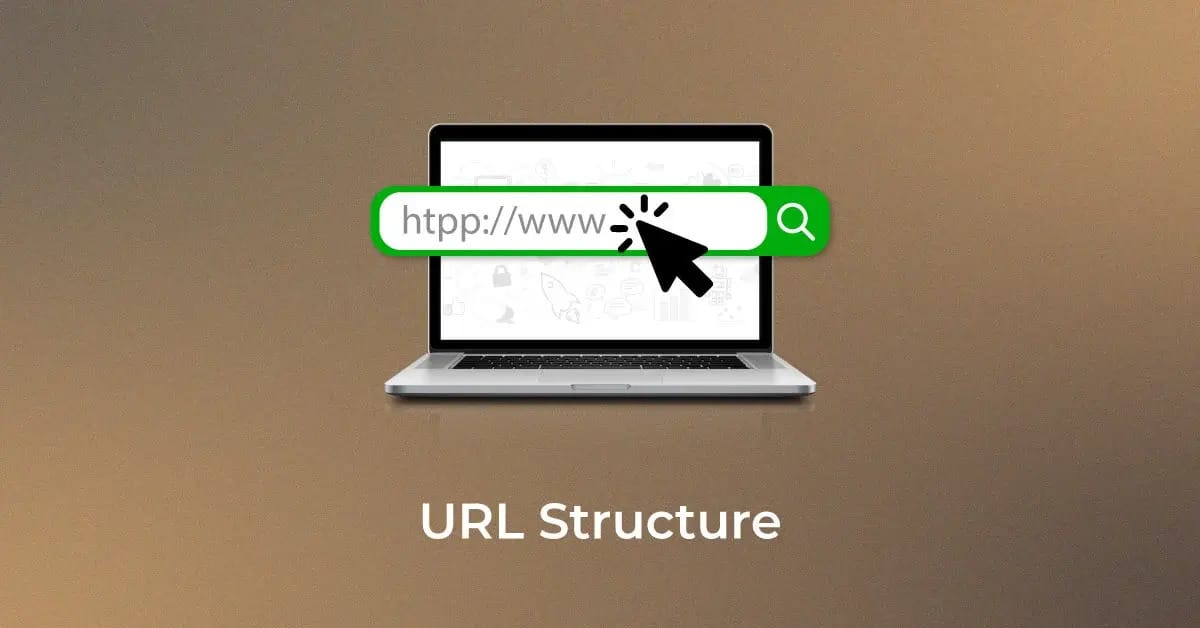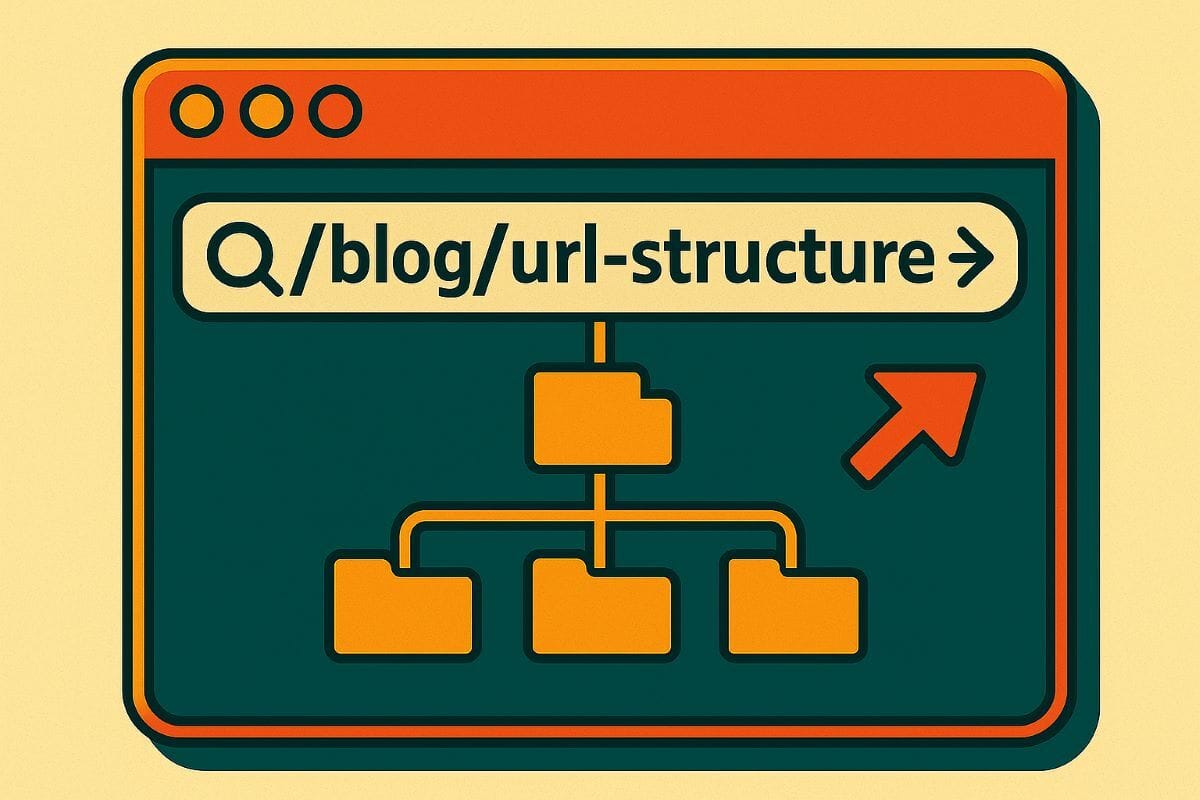At ConnorCedro.com, every strategy I build is tested on my own websites first. That’s how I know my SEO delivers real results before I ever use it for a client.
Your URL might seem like a small detail, but it plays a major role in how search engines and users understand your website. The right URL structure for SEO helps your pages get indexed faster, improves click-through rates, and makes your content easier to share.

In short — the simpler and more logical your URLs, the better your site performs.
This guide breaks down what makes an SEO-friendly URL, how to format it for Google, and the best practices that professional marketers and web developers follow in 2025.
Why URL Structure Matters for SEO
Search engines use URLs to understand what a page is about and how it fits into your site hierarchy. A clean, descriptive URL gives Google context and helps users trust your content before clicking.
A well-structured URL also improves:
Indexing: Clear folder structures make crawling easier for search bots.
Relevance: Keywords in URLs reinforce topical focus.
User experience: Short, readable URLs build trust and encourage clicks.
Link sharing: Simple URLs are more likely to be shared and linked to.
An optimized URL benefits both people and algorithms — it’s a small detail that supports big SEO wins.
What Is an SEO-Friendly URL?
An SEO-friendly URL is short, descriptive, and easy to read. It tells both Google and your audience what the page contains without unnecessary words or symbols.
Here’s an example of a good vs. bad structure:
✅ Good:
❌ Bad:
The first example is clear, keyword-focused, and user-friendly. The second is messy, full of parameters, and offers no context.
Elements of a Great URL Structure
1. Keep It Short and Simple
Short URLs perform better. Aim for 60 characters or fewer whenever possible. Each folder or subdirectory adds depth, so keep the structure shallow.
Example:
/blog/best-url-structure is better than /blog/2025/seo-tips/best-url-structure-for-seo-in-2025.
2. Use Hyphens, Not Underscores
Search engines treat hyphens (-) as word separators. Underscores (_) are not always recognized the same way. Always use hyphens for multi-word phrases.
Example:
/keyword-research-tools not /keyword_research_tools.
3. Include Primary Keywords Naturally
Adding your target keyword improves relevance. Avoid stuffing multiple terms — one clear focus is enough.
Example:
/local-seo-services is better than /local-seo-marketing-optimization-services-florida.
4. Use Lowercase Letters
Mixed or uppercase URLs can create duplicate versions of the same page on some servers. Keep all characters lowercase to avoid confusion.
5. Avoid Stop Words and Filler
Words like “and,” “the,” or “of” don’t add value to a URL. Keep the structure lean and to the point.
6. Match URL to Title and Content
Consistency helps SEO and user understanding. If your page title is “How to Create the Best URL Structure for SEO,” a matching URL like /best-url-structure-for-seo reinforces context.
7. Limit Subfolders
Too many layers make crawling harder. Stick to one or two subdirectories whenever possible.
Example:
/services/web-design instead of /business/marketing/online/web-design.
8. Avoid Dynamic Parameters
Parameters like ?id=45&ref=campaign confuse crawlers. Use static URLs with readable slugs instead.
9. Choose HTTPS Over HTTP
Security is a ranking factor. Always use HTTPS to protect users and build trust.
The Role of URL Structure in Site Architecture
URLs reflect your website’s architecture. A logical structure organizes content into categories, helping both users and search engines navigate easily.
For example:
/services/
/services/seo/
/services/seo/local-seo/
/services/seo/technical-seo/
Each layer shows hierarchy and topic relevance. Google uses this structure to understand how pages connect and which ones are most important.
Flat architectures (fewer subfolders) make indexing faster. Hierarchical structures (with organized folders) improve topical relevance. The best approach combines both — structured but simple.
If you want to strengthen your site’s technical foundation and boost organic performance, read Technical SEO Services for Better Rankings. This post covers everything from crawlability and indexing to site structure and load speed, showing how these elements work together to improve rankings. It’s the perfect technical SEO reference for anyone looking to optimize their website for both users and search engines.

Keyword Placement in URLs
Keywords in URLs act as a ranking signal, but moderation is key. Google values clarity more than repetition.
Bad example:
/seo-seo-seo-services-florida-optimization
Good example:
/seo-services-florida
When used correctly, keywords in URLs can increase click-through rates because users immediately know what they’ll find on the page.
Also, avoid changing URLs frequently — consistency builds link equity.
How to Handle URL Changes
If you must rename or reorganize a page:
Set up a 301 redirect from the old URL to the new one.
Update internal links and sitemaps.
Submit the updated sitemap to Google Search Console.
Avoid temporary (302) redirects unless absolutely necessary, as they don’t pass full link value.
Best Practices for Different Page Types
Blog Posts
Keep URLs short, timeless, and without dates unless necessary.
Example:
/blog/best-url-structure-for-seo
Avoid:
/2023/10/best-url-structure-for-seo — it dates the post and complicates updates.
Product Pages
Include product name and key differentiator.
Example:
/shop/leather-office-chair
Avoid SKU-heavy slugs like /shop/abc1234.
Category Pages
Use broad, keyword-driven terms.
Example:
/mens-shoes or /digital-cameras.
Service Pages
Combine service type and location if relevant for local SEO.
Example:
/tampa-seo-services or /miami-digital-marketing.
Landing Pages
URLs for paid ads or Google Ads campaigns should stay short and trackable, like /offers/free-seo-audit. Consistency helps maintain clear conversion tracking in analytics tools.
Common URL Mistakes to Avoid
Keyword stuffing: Overusing terms reduces readability.
Changing URLs frequently: Causes broken links and ranking loss.
Ignoring canonical tags: Leads to duplicate content issues.
Using session IDs: Creates multiple versions of the same page.
Adding unnecessary folders: Makes the path long and confusing.
Even small URL issues can impact how Google crawls and ranks your site.
How to Audit Your URL Structure
Regular audits keep your website organized and efficient. Here’s how to perform one:
Crawl your site using an SEO tool like Ahrefs or Screaming Frog.
Export URLs into a spreadsheet to analyze patterns.
Check for duplicates, long slugs, and unnecessary parameters.
Review analytics in Google Analytics and Search Console to find top-performing URLs.
Simplify or consolidate where possible.
URL audits are part of broader technical SEO. Clean structures reduce crawl errors, improve page speed, and enhance user experience.
SEO and User Experience Connection
Google prioritizes pages that make sense to users. If your URLs are clean and descriptive, people are more likely to click, stay, and engage.
Here’s why:
A readable URL increases trust and CTR.
Logical structure supports intuitive site navigation.
Short, memorable URLs encourage return visits and shares.
UX and SEO are now inseparable. Search engines want URLs that align with human behavior.
How to Build an SEO-Friendly URL Structure from Scratch
Plan your hierarchy first. Outline main pages, subpages, and supporting articles.
Use simple, consistent folder names. Stick to one naming convention.
Write clean slugs. Avoid filler words and special characters.
Include one keyword. Ensure it matches page intent.
Maintain internal linking. Use descriptive anchor text that matches your URLs.
Test before publishing. Use a crawler or preview mode to ensure proper redirects.
Think of URLs like your website’s filing system — organized, easy to navigate, and built for both users and search bots.
Case Study: How URL Optimization Boosted Organic Traffic
A Florida digital marketing agency ran a site audit for a local ecommerce client. The site used dynamic URLs like /product?id=1234 and /cat=home-decor.
After restructuring URLs to descriptive slugs — /home-decor/ceramic-vases — and cleaning unnecessary folders, the site’s organic traffic increased by 40% in 60 days.
Conversion rates also rose because users could now understand what each link represented before clicking. The cleaner URLs improved ad performance on social media and enhanced ranking consistency across mobile and desktop results.
This shows how small technical adjustments can deliver measurable SEO and revenue gains.
The Role of URL Structure in Future SEO
As AI search expands, clarity and hierarchy will matter even more. Google’s machine learning models rely on contextual signals — including URL structure — to understand topic relationships.
Future-proof your website by keeping URLs simple, semantically organized, and free from clutter. Combine strong structure with white label SEO tools or professional auditing platforms to monitor changes and maintain performance.
Final Thoughts
The best URL structure for SEO is one that’s simple, descriptive, and built for humans first. Every slash, folder, and keyword should serve a purpose.
Think of URLs as the roadmap to your content — when users and crawlers can follow that map easily, your visibility grows naturally.
If you’re building a new website or restructuring an existing one, invest time in planning clean URLs now. It’s one of the most cost-effective ways to improve search rankings, enhance usability, and strengthen your entire digital foundation.
A strong URL isn’t just about search engines — it’s about creating a seamless, trustworthy path for every visitor who discovers your brand online.
Ready to grow your website traffic? Contact me to get your custom SEO strategy.
My 3-Step Process for SEO Success:
Site Audit – I analyze your website, industry, and competitors to uncover growth opportunities.
Action Plan – You’ll receive a clear, step-by-step strategy showing exactly how we’ll reach your goals.
Quote – I’ll provide transparent pricing and timelines so you know what to expect from day one.
